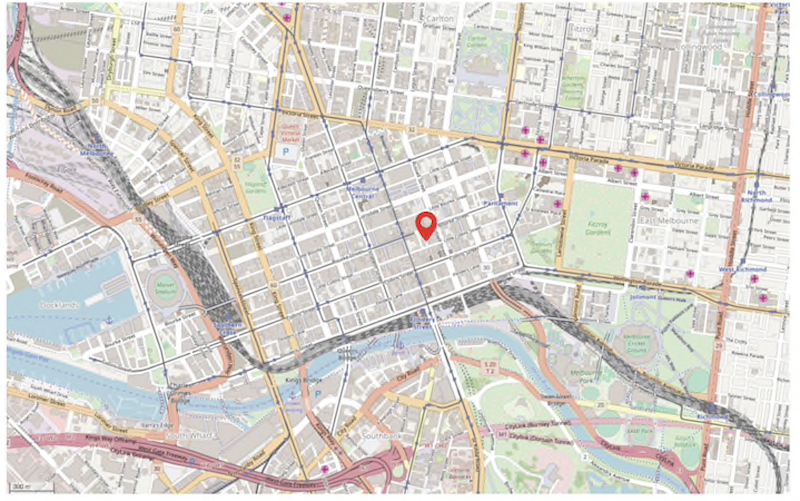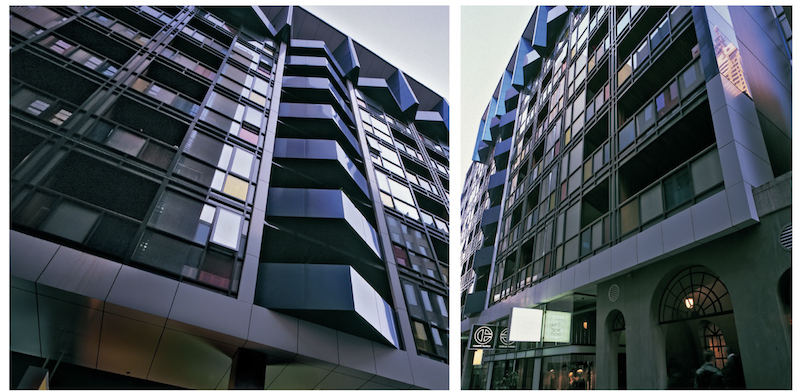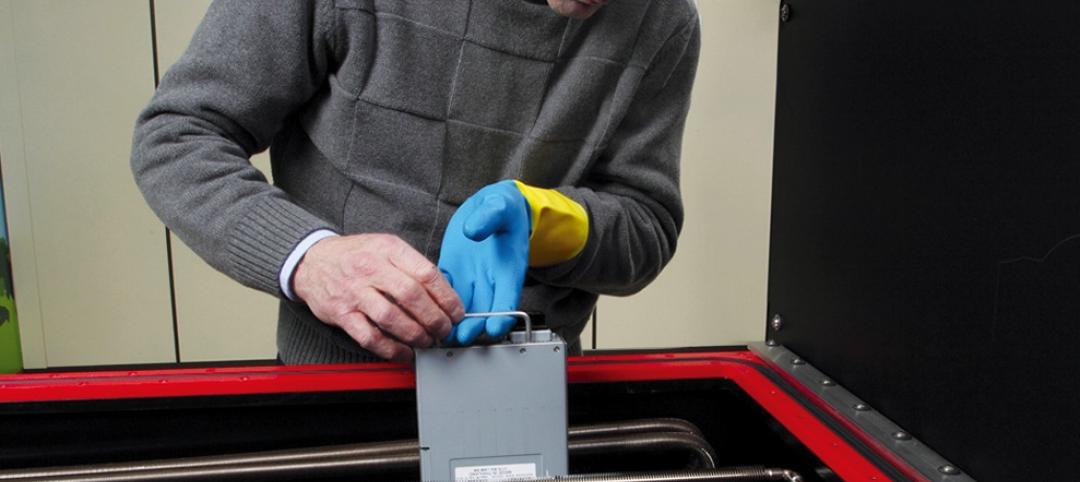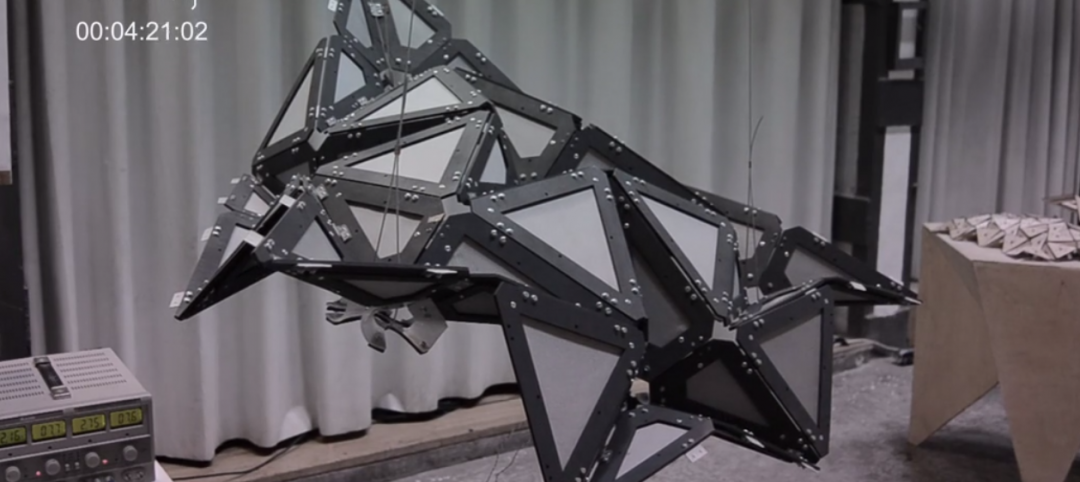The School of Engineering at the University of Melbourne in Australia recently announced plans to build a new campus, to open in the early 2020s, that would feature large-scale research and training facilities to test emerging technologies that address global social and environmental issues.
One of those technologies is prefabrication for construction, and the university has taken a vanguard role to push prefabrication’s market share within the country’s construction industry to 15% by 2025, from 5% currently. That increase would represent around 20,000 new jobs and 30 billion Australian dollars (US$21.1 billion) in growth.
“We are seeing huge demand in the building industry for new techniques that will allow for the development of faster and cheaper construction. The only way to reduce costs is to reduce the cost of manufacturing,” says Tuan Ngo, director of the Advanced Protective Technologies for Engineering Structures Group within the university’s Department of Infrastructure Engineering.
It's not always easy to pinpoint a movement's breakthrough moments. But an online article that Deloitte posted on February 26 makes the case for a high-rise project in Melbourne, completed in 2010, that deployed a construction technique where entire floors of the building were completed offsite and assembled onsite by snapping together the modules one on top of the other.
The location: Russell Place in Melbourne’s central business district. That real estate was problematic to build on because it sat over one of the district’s electrical substations. Weight restrictions limited the mass of any building constructed on the site, and ground vibration had to be minimized.
The land owner, a pre-eminent architect named Nonda Katsalidis, circumvented these roadblocks and restrictions by treating the construction process as a design-for-manufacture-and-assembly problem, rather than a building problem.

Russell Place, where the Little Hero building was assembled, sat over a primary electrical substation for Melbourne's central business district, which presented several construction limitations. Image: Deloitte Insights
Katsalidis’ twist on an already-established design-for-manufacturing technique was to “unitize” the building, so that each unit—in this case, each floor—was finished in a factory and then transported completed to the jobsite for quicker assembly, a la LEGO Duplo.
Executing this approach required making a digital model of the entire building, accurate to its light fittings, power sockets, washers, and door hinges. Deloitte’s authors called this BIM on steroids.
To pull this off, Katsalidis cofounded a technology company, Unitised Building in 2008, and partnered with a building firm Hickory Group to create the tooling required, and to develop and manipulate the models.
The Russell Place site was the first to host a building constructed with Unitised Building’s modular method. Completed in 2010, the building, called Little Hero, contains 63 one- and two-bedroom apartments and duplex penthouse residences, all of which sit atop seven retail shops, cafés, and restaurants. The unitized process not only complied with all of the site’s restrictions, but cut construction time by more than six months compared to a conventional approach: The eight-story building took only four weeks to erect, at a cost comparable to that of a conventional process.
Deloitte’s authors explain that what separated the unitized approach from conventional prefab modular design and construction at that time was that it was easier to customize, focused on mid- to high-rise construction, and allowed completed modules to be “snapped” together, in contrast to a kit of parts approach.
In addition, say the authors, unitization offered a new way to export BIM data. “It is possible for a firm to retain possession of the models and export only the instructions they generate, to guide the machines and workers in a remote contract manufacturing facility and the remote building site. The models are held domestically, where the engineering talent required to develop and maintain the IP in them is located.”
Deloitte’s authors note that unitization has since led to a larger discussion about different approaches to building as an activity. Rather than simply digitizing existing building practices … “we need to digitalize building by shifting the foundation of our operating model to a wholly different premise,” they wrote.
The unitized process sometimes requires improvisation, too. In 2017, Hickory Group was working on a site within Melbourne’s central business district where access was awkward. The crane that was needed to lift building units into place blocked a narrow laneway, making it difficult for local residents to access their properties.
To navigate the problem, the firm offered to build only at night. To prove this approach to skeptical a city council and residents, Hickory ran a trial build one night, which went unnoticed despite the firm warning nearby residents about it beforehand. With the council and residents convinced that installing building units at night would work, construction went ahead.

King 25, Australia's tallest timber building, was assembled using prefabricated engineered wood components. Image: Wonderful Engineering
Whatever success Unitised Building and other companies may have had, it remains to be seen whether prefab construction can get beyond the nascent stage in Australia.
Prefab, as a concept, got a boost when Australia’s tallest timber building, the 10-story 45-meter-tall (148-ft-tall) 25 King, an office and residential tower in Brisbane, opened earlier this month. Designed by the architectural firm Bates Smart, the building’s engineered-wood components were prefabricated offsite. The entire construction took 15 months to complete.
But supply and demand are still in question. One one hand, Strongbuild, which made prefab houses from an 8,000-sm (86,111-sf) factory in Sydney, last November lost a AUD$45 million contract and went into voluntary “administration,” Australia’s version of liquidation.
On the other hand, David Chandler, a former builder who is now adjunct professor in construction management at Western Sydney University, told the Australian Financial Review that the country could lose up to 200,000 construction jobs to offshore competition if it doesn’t set up a viable prefab construction industry within the next decade.
Related Stories
| Dec 29, 2014
HealthSpot station merges personalized healthcare with videoconferencing [BD+C's 2014 Great Solutions Report]
The HealthSpot station is an 8x5-foot, ADA-compliant mobile kiosk that lets patients access a network of board-certified physicians through interactive videoconferencing and medical devices. It was named a 2014 Great Solution by the editors of Building Design+Construction.
| Dec 28, 2014
Robots, drones, and printed buildings: The promise of automated construction
Building Teams across the globe are employing advanced robotics to simplify what is inherently a complex, messy process—construction.
BIM and Information Technology | Dec 28, 2014
The Big Data revolution: How data-driven design is transforming project planning
There are literally hundreds of applications for deep analytics in planning and design projects, not to mention the many benefits for construction teams, building owners, and facility managers. We profile some early successful applications.
| Dec 23, 2014
5 tech trends transforming BIM/VDC
From energy modeling on the fly to prefabrication of building systems, these advancements are potential game changers for AEC firms that are serious about building information modeling.
| Dec 17, 2014
ULI report looks at growing appeal of micro unit apartments
New research from the Urban Land Institute suggests that micro units have staying power as a housing type that appeals to urban dwellers in high-cost markets who are willing to trade space for improved affordability and proximity to downtown neighborhoods.
| Nov 3, 2014
Novel 'self-climbing' elevator operates during construction of high-rise buildings
The JumpLift system from KONE uses a mobile machine room that moves upward as the construction progresses, speeding construction of tall towers.
| Oct 14, 2014
Slash energy consumption in data centers with liquid-based ‘immersive-cooling’ technology
A new technology promises to push the limits of data center energy efficiency by using liquid instead of air to cool the servers.
| Sep 10, 2014
Must See: Shape-shifting architecture that responds to heat
Students in Barcelona have created a composite material using shape memory polymers that can deform and return to their original state when activated by cues like heat, humidity, and light.
| Aug 4, 2014
Facebook’s prefab data center concept aims to slash construction time in half
Less than a year after opening its ultra-green, hydropowered data center facility in Luleå, Sweden, Facebook is back at it in Mother Svea with yet another novel approach to data center design.
| Aug 4, 2014
BIM Giants: Firms enhance BIM/VDC with advanced collaboration tools [2014 Giants 300 Report]
Cloud-based data sharing, rapid iterative design, and cross-discipline collaboration are among the emerging trends in the BIM/VDC field, according to BD+C's 2014 Giants 300 Report.

















